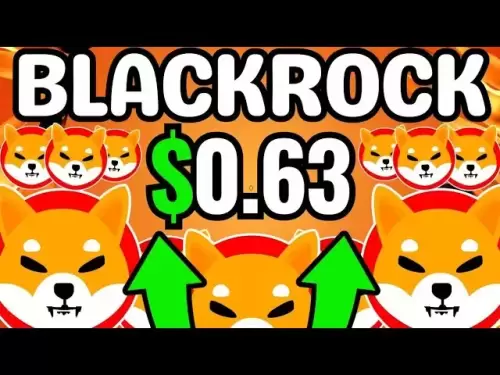-
 Bitcoin
Bitcoin $118000
-0.30% -
 Ethereum
Ethereum $3672
2.06% -
 XRP
XRP $3.433
-1.26% -
 Tether USDt
Tether USDt $1.000
-0.03% -
 BNB
BNB $744.4
1.39% -
 Solana
Solana $178.5
0.43% -
 USDC
USDC $0.9998
-0.01% -
 Dogecoin
Dogecoin $0.2544
1.55% -
 TRON
TRON $0.3197
-1.41% -
 Cardano
Cardano $0.8411
1.25% -
 Hyperliquid
Hyperliquid $45.06
-0.50% -
 Stellar
Stellar $0.4642
-0.67% -
 Sui
Sui $3.872
1.79% -
 Chainlink
Chainlink $18.76
2.98% -
 Hedera
Hedera $0.2686
1.16% -
 Avalanche
Avalanche $24.70
3.92% -
 Bitcoin Cash
Bitcoin Cash $522.9
1.41% -
 Shiba Inu
Shiba Inu $0.00001516
0.13% -
 Litecoin
Litecoin $112.3
9.31% -
 UNUS SED LEO
UNUS SED LEO $8.999
0.24% -
 Toncoin
Toncoin $3.204
0.01% -
 Polkadot
Polkadot $4.418
3.06% -
 Uniswap
Uniswap $10.53
3.16% -
 Monero
Monero $327.6
0.76% -
 Ethena USDe
Ethena USDe $1.001
-0.02% -
 Bitget Token
Bitget Token $4.987
1.52% -
 Pepe
Pepe $0.00001371
2.34% -
 Dai
Dai $1.000
0.00% -
 Aave
Aave $323.3
0.40% -
 Bittensor
Bittensor $416.9
0.79%
How to calculate the total cost of ownership (TCO) for a mining rig?
"Calculating the total cost of ownership for a mining rig involves factoring in initial costs, electricity, cooling, maintenance, depreciation, and resale value to determine long-term profitability."
Jul 20, 2025 at 02:15 am

Understanding the Components of Total Cost of Ownership (TCO) for a Mining Rig
When evaluating the total cost of ownership (TCO) for a mining rig, it's essential to consider all financial aspects involved in acquiring, operating, and maintaining the hardware over its lifespan. Many users overlook hidden expenses such as electricity, maintenance, cooling, and depreciation. To accurately calculate TCO, one must break down each component and understand how they contribute to the overall expense.
One primary factor is the initial purchase cost of the mining rig. This includes the price of the graphics processing units (GPUs), motherboard, power supply unit (PSU), frame or case, memory, and any additional peripherals required for mining operations. Prices can vary significantly depending on market conditions, especially during GPU shortages or crypto bull runs.
Factoring in Electricity Costs
The largest ongoing expense for most miners is electricity consumption. Mining rigs operate continuously, drawing significant power over time. To calculate this part of the TCO, you need to determine the rig’s wattage and multiply it by the number of hours it operates per day, then multiply that by the local electricity rate per kilowatt-hour (kWh).
For example:
- A mining rig consumes 1200 watts
- It runs 24 hours a day
- The local electricity rate is $0.10 per kWh
Calculation:
- Daily consumption: 1200W * 24h = 28.8 kWh
- Daily cost: 28.8 kWh * $0.10 = $2.88
- Monthly cost: $2.88 30 = $86.40
This figure should be multiplied by the expected operational lifespan of the rig to estimate total energy costs.
Accounting for Cooling and Environmental Expenses
Mining generates a substantial amount of heat, so effective cooling solutions are necessary to maintain performance and longevity. Whether using fans, air conditioning, or specialized cooling systems, these also consume electricity and increase the TCO.
Additionally, if you're operating in a dedicated space like a garage or warehouse, you may incur rental or infrastructure costs, ventilation requirements, and dust filtration systems. These environmental factors should not be ignored when calculating long-term expenses.
Some miners install temperature monitoring tools or use software to manage fan speeds automatically. These tools help reduce wear and tear on components and may lower long-term repair costs.
Maintenance, Repairs, and Hardware Replacement
Mining hardware is under constant stress, which accelerates wear and tear. Over time, GPUs may degrade in performance, and other components like motherboards, PSUs, or storage drives may fail. Maintenance and replacement costs should be included in your TCO calculation.
To estimate this:
- Track average failure rates based on usage
- Research the cost of spare parts
- Consider labor or service fees if professional repairs are needed
Many experienced miners allocate a monthly budget specifically for preventative maintenance, including cleaning, thermal paste replacement, and firmware updates. These practices can extend the life of the rig and improve efficiency.
Depreciation and Resale Value
Hardware depreciates over time due to technological advancements and physical wear. When calculating TCO, it's important to account for depreciation as an implicit cost. You can estimate depreciation by subtracting the expected resale value from the initial purchase price.
For instance:
- Initial cost: $5,000
- Expected resale after two years: $1,000
- Depreciation cost: $4,000
This depreciation represents the loss in value over the mining period and should be factored into the overall investment analysis.
Resale value depends heavily on the condition of the hardware, market demand for used GPUs, and whether the rig was used for intensive mining or lighter tasks.
Putting It All Together: A Sample TCO Calculation
Let’s walk through a sample scenario:
- Initial cost: $5,000
- Electricity cost over 2 years: $86.40/month 24 months = $2,073.60
- Cooling & environmental costs: Estimated at $300/year = $600 total
- Maintenance & repairs: Budgeted $200/year = $400 total
- Depreciation: $4,000
Total TCO = $5,000 + $2,073.60 + $600 + $400 + $4,000 = $12,073.60
This example demonstrates how quickly secondary costs can surpass the initial investment. Accurate tracking of each component allows miners to make informed decisions about profitability and sustainability.
Frequently Asked Questions
Q1: Can I reduce my mining rig’s electricity costs without lowering hash rate?
Yes, optimizing power settings in mining software can often reduce wattage consumption while maintaining competitive hash rates. Undervolting and slightly reducing clock speeds are common strategies among miners.
Q2: How do I track maintenance costs effectively?
Use a spreadsheet or accounting software to log every repair, replacement, and service date. Include both monetary and time-based costs to evaluate long-term maintenance impact.
Q3: Does location affect the TCO of a mining rig?
Absolutely. Geographic location influences electricity prices, ambient temperature, humidity levels, and even tax implications related to cryptocurrency earnings. Cooler climates may reduce cooling costs, while low electricity tariffs directly cut energy expenses.
Q4: Should I include taxes in my TCO calculation?
While not a direct operational cost, tax obligations on mined cryptocurrency can influence net profit. Tracking income from mining and consulting with a tax professional helps provide a clearer financial picture.
Disclaimer:info@kdj.com
The information provided is not trading advice. kdj.com does not assume any responsibility for any investments made based on the information provided in this article. Cryptocurrencies are highly volatile and it is highly recommended that you invest with caution after thorough research!
If you believe that the content used on this website infringes your copyright, please contact us immediately (info@kdj.com) and we will delete it promptly.
- Crypto, Altcoins, and Genius Clarity: Decoding the 2025 Bull Run
- 2025-07-20 10:50:12
- DOGE's Double Bottom: Is a $0.42 Target Really in Sight?
- 2025-07-20 10:30:12
- Cryptos Surge: Decoding Market Gains & Top Performing Assets
- 2025-07-20 10:30:12
- Shiba Inu, Market Cap, and Troller Cat: A Meme Coin Mashup for the Ages
- 2025-07-20 10:50:12
- Bitcoin Wallets, Profitability, and BTC Price: What's the Hype?
- 2025-07-20 10:55:12
- Troller Cat's Stage 14: Balloon Boy Hoax, Contributions Soar!
- 2025-07-20 10:55:12
Related knowledge

How are crypto mining profits taxed?
Jul 14,2025 at 12:28am
Understanding Cryptocurrency Mining and TaxationCryptocurrency mining involves validating transactions on a blockchain network and earning rewards in ...

How to keep a mining rig cool
Jul 12,2025 at 01:42pm
Understanding the Importance of Cooling in Mining RigsCryptocurrency mining is an intensive process that places heavy demand on hardware components, p...

How to mine crypto on a gaming PC
Jul 16,2025 at 12:00pm
What is Crypto Mining on a Gaming PC?Crypto mining involves using your computer's processing power to validate transactions on a blockchain network. A...

How to set up a crypto miner
Jul 16,2025 at 09:14am
Understanding Ethereum Gas Fees: What Are They and How Do They Work?Ethereum gas fees are a fundamental aspect of the network, representing the cost r...

Can you mine crypto on a laptop?
Jul 16,2025 at 02:21am
Is It Feasible to Mine Cryptocurrency on a Laptop?Mining cryptocurrency on a laptop is technically possible, but feasibility depends heavily on the ha...

Is crypto mining worth it?
Jul 16,2025 at 01:21am
Understanding the Basics of Crypto MiningCrypto mining refers to the process of validating transactions on a blockchain network by solving complex mat...

How are crypto mining profits taxed?
Jul 14,2025 at 12:28am
Understanding Cryptocurrency Mining and TaxationCryptocurrency mining involves validating transactions on a blockchain network and earning rewards in ...

How to keep a mining rig cool
Jul 12,2025 at 01:42pm
Understanding the Importance of Cooling in Mining RigsCryptocurrency mining is an intensive process that places heavy demand on hardware components, p...

How to mine crypto on a gaming PC
Jul 16,2025 at 12:00pm
What is Crypto Mining on a Gaming PC?Crypto mining involves using your computer's processing power to validate transactions on a blockchain network. A...

How to set up a crypto miner
Jul 16,2025 at 09:14am
Understanding Ethereum Gas Fees: What Are They and How Do They Work?Ethereum gas fees are a fundamental aspect of the network, representing the cost r...

Can you mine crypto on a laptop?
Jul 16,2025 at 02:21am
Is It Feasible to Mine Cryptocurrency on a Laptop?Mining cryptocurrency on a laptop is technically possible, but feasibility depends heavily on the ha...

Is crypto mining worth it?
Jul 16,2025 at 01:21am
Understanding the Basics of Crypto MiningCrypto mining refers to the process of validating transactions on a blockchain network by solving complex mat...
See all articles

























































































